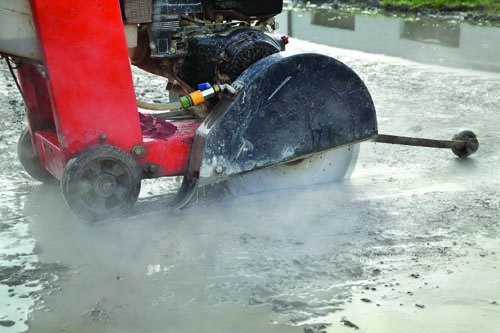Preventing silicosis

Silicosis is a severe chronic lung disease caused by inhaling crystalline silica. “Approximately 2.3 million workers are exposed to respirable crystalline silica in the workplace, including 2 million workers in construction and 300,000 workers in general industry, maritime and hydraulic fracturing,” the Centers for Disease Control and Prevention says.
But what is respirable crystalline silica, and why is it so hazardous?
A dangerous mineral
Occurring in crystalline and non-crystalline form, silica is a mineral found in sand, sandstone, shale and granite. When workers drill, crush, chip or break materials that contain crystalline silica, large amounts of respirable crystalline silica can form as dust, CDC says. The dust particles are microscopic, so they can penetrate deep into a worker’s lungs if inhaled, eventually affecting a person’s ability to breathe.
The American Lung Association notes that various types of silicosis exist:
Acute silicosis causes coughing, weight loss and fatigue within a few weeks or years of exposure to inhaled silica.
Chronic silicosis appears roughly 10 to 30 years after exposure and can cause extensive lung scarring, particularly in the upper lungs.
Accelerated silicosis occurs within 10 years of high-level exposure.
Workers with silicosis have an increased risk of other health issues, including tuberculosis, chronic bronchitis and lung cancer, the association says.
Controlling exposure
Because silicosis has no cure, exposure prevention is the best way to keep workers safe from respirable crystalline silica. CDC recommends employers follow the Hierarchy of Controls, which lists methods in decreasing levels of effectiveness:
- Eliminate job tasks that expose workers to respirable crystalline silica.
- Substitute non-crystalline silica materials when possible.
- Incorporate engineering controls, such as using local exhaust ventilation or water spray to reduce silica dust.
- Incorporate administrative controls, such as limiting the time workers spend around respirable crystalline silica or their access to areas with high concentrations of respirable crystalline silica.
- Wear personal protective equipment, such as respirators, when working with respirable crystalline silica.
To learn more about silicosis, visit sh-m.ag/2LPc0Up.
Post a comment to this article
Safety+Health welcomes comments that promote respectful dialogue. Please stay on topic. Comments that contain personal attacks, profanity or abusive language – or those aggressively promoting products or services – will be removed. We reserve the right to determine which comments violate our comment policy. (Anonymous comments are welcome; merely skip the “name” field in the comment box. An email address is required but will not be included with your comment.)

